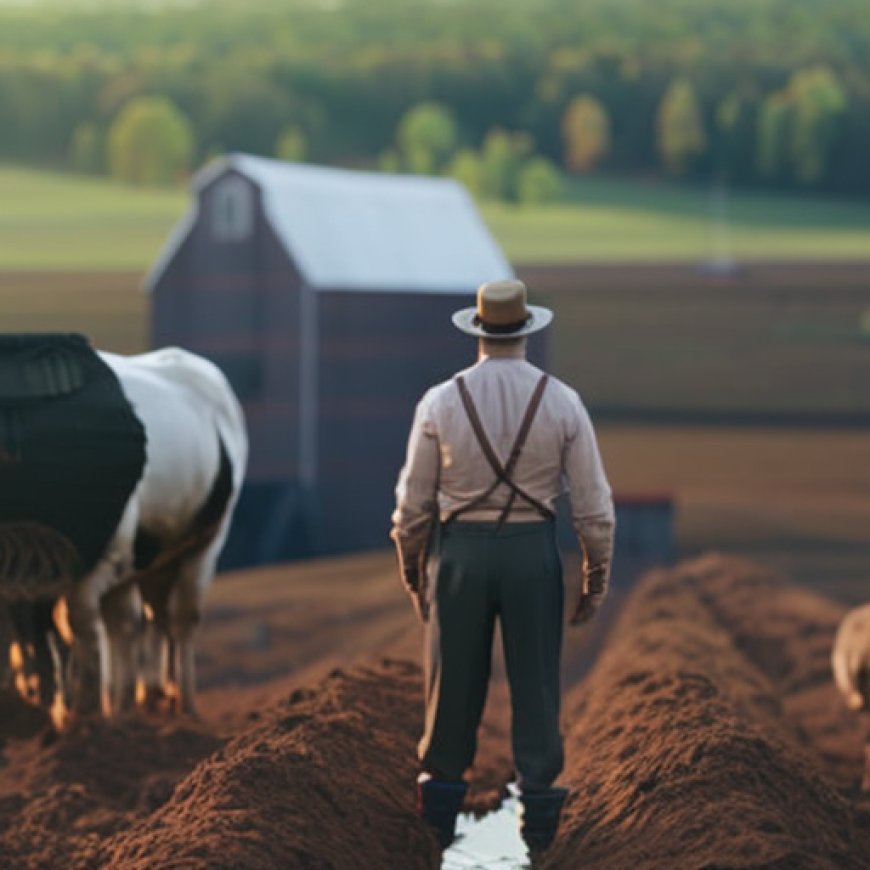Manage farm risks
Manage farm risks Farm Progress


Effective Risk Management Strategies for Sustainable Farming
Farming is a sector fraught with uncertainty, with factors like weather, market conditions, and biological processes posing significant risks. To ensure the sustainability and growth of a farming business, it is crucial to manage these risks effectively. This not only protects the livelihood of farmers but also contributes to achieving the Sustainable Development Goals (SDGs), particularly SDG 2 (Zero Hunger) and SDG 12 (Responsible Consumption and Production).
Key Strategies for Managing Farm Risks
Developing a comprehensive risk management plan is essential for farmers. The following strategies can be employed to mitigate risks:
- Structural Decisions in Farm Operations: The structure of farm operations is vital in risk management. This includes engaging with landlords, formalizing lease agreements, managing equipment, and having a succession plan.
- Strategic Marketing and Pricing: Understanding marketing tools and integrating them with financial analysis helps in making informed decisions that align with market trends and financial stability.
- Diversification of Crops and Income: Planting a variety of crops and exploring alternative income streams like agritourism can significantly reduce the risk of failure and contribute to financial stability.
- Utilization of Advanced Agricultural Technologies: Adopting drought-resistant varieties, advanced irrigation systems, and precision agriculture techniques enhances crop resilience and operational efficiency.
Regular market analysis and understanding the cost of production are also crucial for grounded decision-making. Selling a portion of the product at a profit when market conditions are favorable can ensure financial stability and reduce risk exposure.
Technological Advancements in Agriculture
The use of tools like AgriBuilder from Adams Brown, which integrates elements of farm management such as financial monitoring and resource management, optimizes resource use and improves decision-making. This makes farms more efficient and less prone to risks.
Each of these strategies adds a layer of security and efficiency to farming operations, helping to mitigate the diverse risks faced in agriculture. For more information about how risk management issues affect your farm operation, contact an Adams Brown adviser.
Note: The information provided here is intended for discussion purposes only and should not be interpreted as legal or tax advice. Please consult your own business accountants or financial and legal experts.
Contact McCurry at [email protected] or 316-262-6578 for further assistance.
Analysis of Sustainable Development Goals (SDGs) in the Article
1. Which SDGs are addressed or connected to the issues highlighted in the article?
The article addresses several Sustainable Development Goals (SDGs), specifically:
- SDG 2: Zero Hunger
- SDG 8: Decent Work and Economic Growth
- SDG 9: Industry, Innovation, and Infrastructure
- SDG 12: Responsible Consumption and Production
- SDG 13: Climate Action
2. What specific targets under those SDGs can be identified based on the article’s content?
The article implies several specific targets under the mentioned SDGs:
- Target 2.4: Sustainable food production and resilient agricultural practices
- Target 8.2: Achieve higher levels of economic productivity through diversification, technological upgrading, and innovation
- Target 9.4: Upgrade infrastructure and retrofit industries to make them sustainable, with increased resource-use efficiency and greater adoption of clean and environmentally sound technologies and industrial processes
- Target 12.2: Achieve sustainable management and efficient use of natural resources
- Target 13.1: Strengthen resilience and adaptive capacity to climate-related hazards and natural disasters
3. Are there any indicators mentioned or implied in the article that can be used to measure progress towards the identified targets?
The article implies several indicators for measuring progress, such as:
- Indicator for Target 2.4: The proportion of agricultural area under productive and sustainable agriculture
- Indicator for Target 8.2: Annual growth rate of real GDP per employed person
- Indicator for Target 9.4: CO2 emission per unit of value added
- Indicator for Target 12.2: Material footprint, material footprint per capita, and material footprint per GDP
- Indicator for Target 13.1: Number of countries with national and local disaster risk reduction strategies
4. Create a table with three columns titled ‘SDGs, Targets, and Indicators’
| SDGs | Targets | Indicators |
|---|---|---|
| SDG 2: Zero Hunger | Target 2.4: Sustainable food production and resilient agricultural practices | Proportion of agricultural area under productive and sustainable agriculture |
| SDG 8: Decent Work and Economic Growth | Target 8.2: Achieve higher levels of economic productivity through diversification, technological upgrading, and innovation | Annual growth rate of real GDP per employed person |
| SDG 9: Industry, Innovation, and Infrastructure | Target 9.4: Upgrade infrastructure and retrofit industries to make them sustainable, with increased resource-use efficiency and greater adoption of clean and environmentally sound technologies and industrial processes | CO2 emission per unit of value added |
| SDG 12: Responsible Consumption and Production | Target 12.2: Achieve sustainable management and efficient use of natural resources | Material footprint, material footprint per capita, and material footprint per GDP |
| SDG 13: Climate Action | Target 13.1: Strengthen resilience and adaptive capacity to climate-related hazards and natural disasters | Number of countries with national and local disaster risk reduction strategies |
Copyright: Dive into this article, curated with care by SDG Investors Inc. Our advanced AI technology searches through vast amounts of data to spotlight how we are all moving forward with the Sustainable Development Goals. While we own the rights to this content, we invite you to share it to help spread knowledge and spark action on the SDGs.
Fuente: farmprogress.com

Join us, as fellow seekers of change, on a transformative journey at https://sdgtalks.ai/welcome, where you can become a member and actively contribute to shaping a brighter future.







